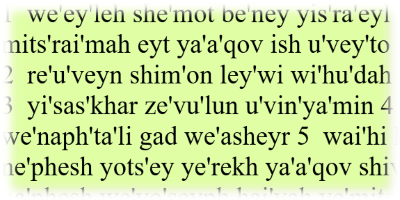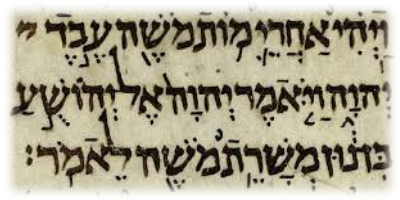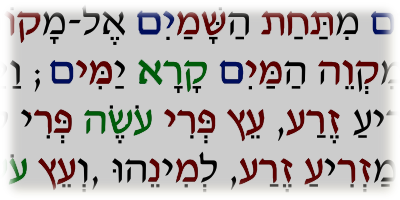The following rules will assist the reader with pronouncing the Hebrew words without relying on the nikkud (vowel pointings) as found in modern Hebrew Bibles, lexicons and dictionaries.
Spirants and Stops
Three Hebrew letters, the beyt, kaph and pey, have more than one pronunciation, one called a "spirant" and the other a "stop." A spirant is a letter whose sound can be prolonged. Some examples of this from the English language are the v, z, f, and sh. A stop is a letter whose sound ends abruptly such as the b, p, d and t. A few of the Hebrew letters will have a different pronunciation depending on their position within the word. The letter ב (beyt) will usually be pronounced as a stop (b) when at the beginning of the word and as a spirant (v) when it is anywhere else in the word. For example, the word בר begins with the letter beyt, which is pronounced with a "b" so the word is pronounced "bar." The word רב has the letter beyt at the end of the word so it is pronounced with a "v" and the word is pronounced rav.
Vowels
Four Hebrew letters double as consonants and vowels. These are the א (aleph), ה (hey), ו (vav) and י (yud). As a consonant, the aleph is a glottal stop (silent pause) and as a vowel it is pronounced ah or "eh." The hey is a h as a consonant or an eh as a vowel. The vav (waw in Ancient Hebrew) is a w as a consonant or an ow or uw as a vowel. The yud is a y as a consonant or an iy as a vowel.
Besides the four vowels mentioned previously, there is another type of vowel, the implied vowel. This means that the vowel is not written but is necessary in order to pronounce the word. An example of this is the word בר (meaning "grain"), which consists of the two consonants with the sounds "B" and "R" and cannot be pronounced without a vowel between them. In most cases the implied vowel will be an a or an e. In this case the implied vowel is the "a" and the word בר is pronounced BaR.
Syllables
There are two types of syllables, open and closed. A closed syllable will include a consonant-vowel-consonant combination while an open syllable will have a vowel-consonant combination. The vowel may be one of the four consonant/vowel letters, usually the yud (I) or the waw (O or U) or an implied vowel. In most cases the final syllable will be a closed syllable. The word ברית (covenant) will have two syllables. The first is ב, an open syllable pronounced be, and the second is רית, a closed syllable pronounced riyt.
Generally, a word with three consonants will be divided as Cv-CvC. A word with four consonants will be divided as Cv-Cv-CvC or CvC-CvC. When a word includes five consonants the breakdown is usually Cv-Cv-Cv-CvC or CvC-Cv-CvC.
If the word includes one of the four consonant/vowel letters, its position within the word will determine if it is used as a consonant or a vowel. Generally, when the consonant/vowel is placed at the beginning of a syllable or the end of a closed syllable it will take on the consonantal sound. When it is in the middle of a closed syllable or the end of an open syllable it will take on the vowel sound.
Masoretic Vowels
The Hebrew text of the Bible was originally written with only the twenty-two letters of the Hebrew alphabet. About one thousand years ago a group called the Masorites created a system of dots and dashes called "nikkud" (nikkudot in the plural) and placed them above and below the Hebrew letters to represent vowel sounds. When the Dead Sea Scrolls were discovered, it was found that the four Hebrew letters, א (aleph), ה (hey), ו (vav) and י (yud), were used as vowels. The Masorites removed many of these vowels (usually the waw and yud) and replaced them with the nikkudot. In the table below are some examples of Hebrew spellings of some Hebrew words in the Masoretic text compared to how they are written in the Dead Sea Scrolls.
| Verse | English | Masoretic | Dead Sea Scroll |
|---|---|---|---|
| Isaiah 2:2 | All | כָּל | כול |
| Isaiah 2:3 | God of Jacob | אֱלֹהֵי יַעֲקֹב | אלוהי יעקוב |
| Isaiah 2:4 | And not | וְלֹא | ולוא |

Like what you’re discovering? Continue the journey from Bible reader to translator.
|






